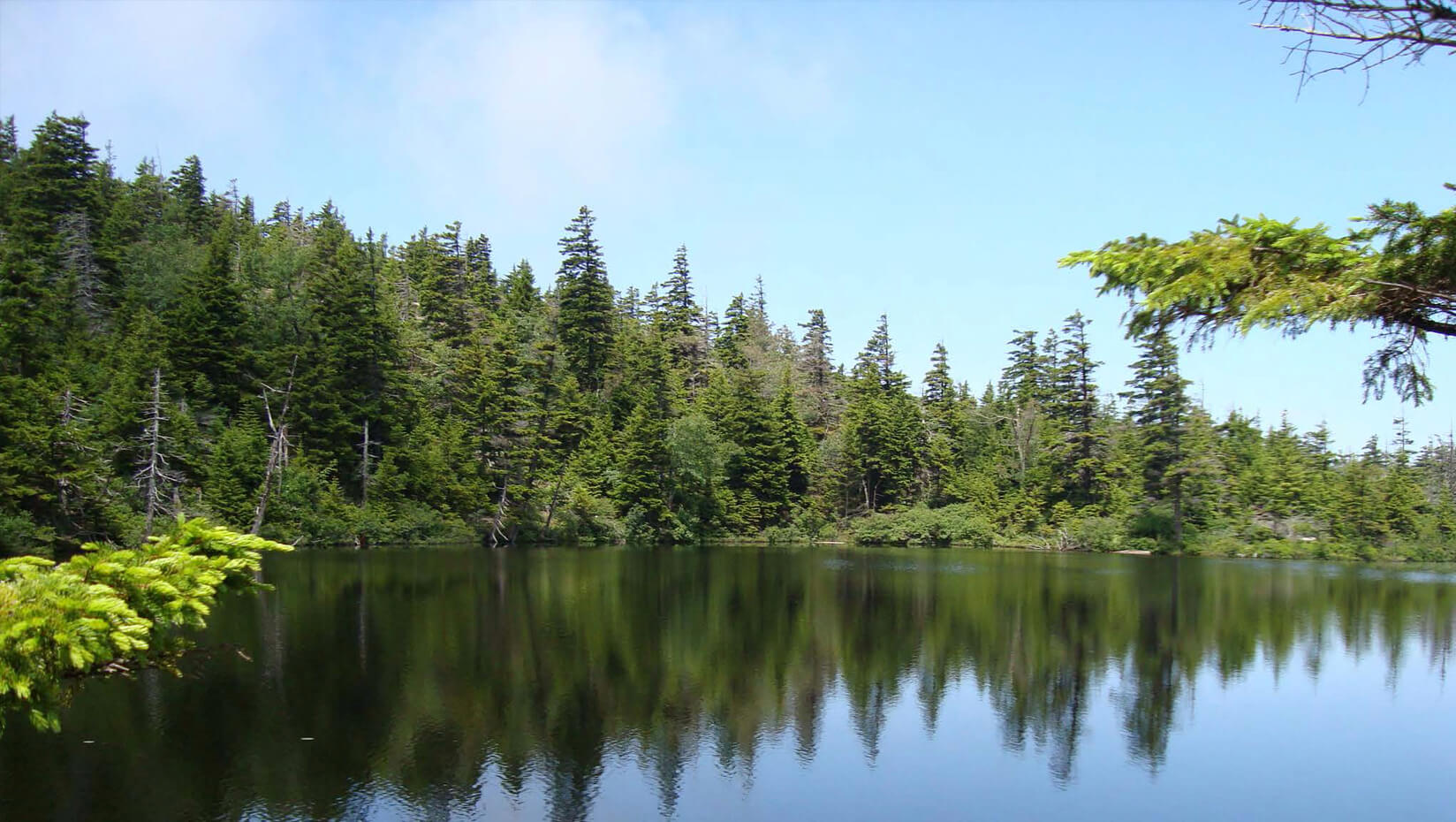
The environmental legacy of acid rain
For Stephen Norton, lakes hold a treasure trove of precious scientific information.
For the past 40 years, Norton, professor emeritus at the University of Maine, has studied lakes by evaluating sediment cores from around the world.
Using the cores taken from the bottom of lakes, he is able to determine the age of the sediment (using radioactive lead and carbon-dating techniques) to see what the environment was like thousands of years ago.
“I started in the days when our culture, and the European culture, were extremely worried about acid rain. Pure and simple, if you put acid up into the atmosphere, not just carbon dioxide as you hear about today, but sulfuric acid and nitric acid, from the burning of fossil fuels and smelting, the acid is going to come down,” says Norton.
“Part of the acid rain problem was that not only were we putting acids into the atmosphere, we were also putting trace metals into global circulation, in particular cadmium, zinc, lead, and mercury.”
The acidity in atmospheric deposition slowly changes forest soils, explains Norton.
“If you lower the pH (increasing the acidity) of soils, then the surface waters become more acidic, which impacts fish, and ultimately humans,” says Norton.
Read transcript
Lake and peat sediments archive pollutants from the atmosphere, thus indirectly recording changes in deposition through time, creating an environmental timeline of pollution for researchers.
Lead pollution received considerable attention in the 1970s and 1980s when many studies demonstrated that the rate of lead deposited in the atmosphere was much greater than in pre-industrial times, largely as a consequence of using a lead additive in gasoline.
After the implementation of the 1970 Clean Air Act in the U.S., and the 1991 Convention on Long-Range Transport of Atmospheric Pollutants of the United Nations Economic Commission for Europe, lead in the atmosphere declined rapidly and to nearly naturally occurring levels.
“Lead in the atmosphere went from quite high, to virtually nothing over two to three decades. But there is still legacy lead in the watershed soils. As lead was declining, mercury’s toxicity became better known. And people started to look hard at mercury in the food chain, particularly in fish,” says Norton.
Mercury is deposited from the atmosphere directly to watersheds in rain and snow and, perhaps more importantly, absorbed by tree leaves and woody tissue; when the leaves fall, that mercury is deposited into the leaf litter of forests.
“In general, leaves on trees, particularly spruce, fir, hemlock, and pine (all softwoods), which have lots of leaf area, are very efficient collectors of pollution. While mercury is substantially reduced in atmospheric deposition, there is still a hundred-year legacy of mercury deposition residing in peat and forest soils,” says Norton.
As the climate continues to warm mercury that has accumulated in soils and peat sediment will be slowly released into surface water, and back into the atmosphere.
Researchers at the University of Maine and in the Czech Republic evaluated four long-term sediment records to understand how much lead and mercury is natural in the environment, and if the sediment archives represent accurate rates of atmospheric deposition.
“These data show us what the background values were. So if we are trying to decrease emissions we can know where our environment is now, and what our goal is for recovery,” says Norton.
“If we go back 200 years in the sediment in Maine, is the accumulation rate of mercury and lead and other elements the same as 1,000 or even 10,000 years ago and, if not, how have things changed and why have they changed.”
Cores were taken from Sargent Mountain Pond in Acadia National Park; Plesne Lake in southwestern Czech Republic; Lake Tulane in central Florida; and Caribou Bog in Orono, Maine.
Each of the sites illustrated how long-term environmental changes influence the deposition and net retention of mercury and lead. The researchers identified forestation, changing groundwater hydrology, evolution of the watershed and lake system, and recent anthropogenic atmospheric pollution as factors that determine the long-term accumulation of these pollutants in various environments.
The researchers found that the accumulation rate of mercury and lead deposited in lake and peat sediments depended on the location and characteristics of the landscape.
“This study helped us answer the question of ‘what is normal.’ And it turns out what’s normal is dictated by several factors, including climate, vegetation, topography, and atmospheric changes. This information will help us more efficiently monitor these chemicals in our environment and help direct remedial action,” says Norton.
The research resulted in a paper, published this year in the journal Environmental Chemistry, is titled, “A comparative study of long-term Hg and Pb sediment archives.”
George Jacobson, emeritus professor of biology, ecology and climate change at UMaine, co-authored the paper, along with two researchers from the Czech Republic.
Norton began collaborating with researchers in the Czech Republic in 1987, when he collected a core from a lake on the border of the Czech Republic (at the time, Czechoslovakia) and Austria that was in an active war alert zone. “It was quite exciting, exhilarating, and at times extremely scary,” said Norton.
“These four cores have enabled us to say how the ecosystem influences deposition of mercury and lead over a long period of time and that there really is no single number we can point to for background rates of pollutant deposition. That number is heavily dependant on the location and environmental conditions.”
Norton and the University of Maine were charter members in the formation of the National Atmospheric Deposition Program (NADP), which was conceived in 1977 to measure atmospheric deposition and study its effects on the environment. There are now 225 sites across North America that collect precipitation samples weekly and send them to a central laboratory to be analyzed. The data are published in the form of interactive maps.
Contact: Margaret Nagle, 207.581.3745
